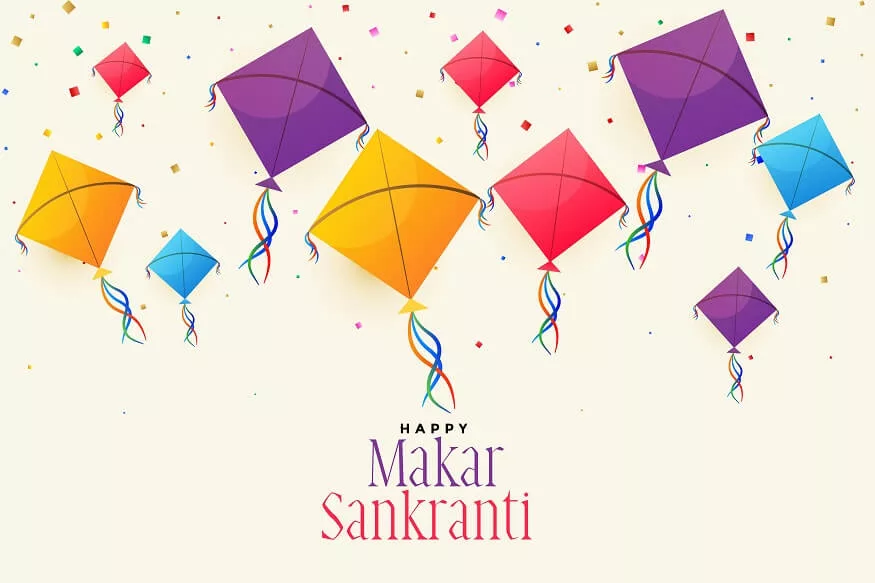Makar Sankranti, a vibrant and auspicious festival, holds deep cultural and mythological significance in the hearts of millions. Its roots can be traced back to Hindu mythology, where it is believed to mark the celestial transition of the sun into the zodiac sign of Capricorn, known as Makara in Sanskrit. According to Hindu scriptures, this celestial movement signifies the end of the winter solstice and the beginning of longer, brighter days. Makar Sankranti 2024 will be celebrated on January 14, 2024
The Story Behind Makar Sankranti
The story goes that Bhishma, a revered and virtuous figure in the Mahabharata, was granted a boon of icchamrityu, the ability to choose the time of his death. However, during the battle of Kurukshetra, he lay on a bed of arrows, waiting for the propitious moment. Despite being wounded and in pain, Bhishma remained alive until the sun started its northward journey in the month of Magha, marking the beginning of Uttarayan.
It is believed that Bhishma waited for the sun to enter the zodiac sign of Makar (Capricorn) before relinquishing his life. His decision to wait for this celestial alignment is considered symbolic, signifying the importance of the Uttarayan period and the auspiciousness associated with it.
Makar Sankranti, therefore, is not only a celebration of the sun’s movement but also a commemoration of Bhishma Pitamah’s sacrifice and devotion to dharma (righteousness). People take holy dips in rivers, make offerings to the sun god, and participate in various festive activities during this time to honour the legend of Bhishma and to seek blessings for a virtuous life.
Also Read: Reasons Why Every Child Should Experience Farming and How to Do It
Makar Sankranti Significance
Here are some significance of the Makar Sankranti festival
- The transition of the Sun:
- Harvest Festival
- Cultural Diversity
- Spiritual Significance
- Festival of Unity and Joy
- Symbolism of Light
- Astrological Considerations
- Honouring Cattle
- Seasonal Change Celebration
Makar Sankranti marks the transition of the sun into the zodiac sign of Capricorn (Makar in Sanskrit). This celestial event is known as Uttarayan, and it signifies the end of the winter solstice when the sun starts its northward journey. It marks the beginning of longer days and is considered a time of increased positive energy.
Makar Sankranti is celebrated as a harvest festival across India. It coincides with the harvesting season, and farmers express gratitude for the abundance of crops. The festival is an occasion to celebrate the fruits of hard work and to pray for a prosperous agricultural year ahead.
Different regions of India celebrate Makar Sankranti with unique customs and traditions. In Maharashtra, it’s marked by the exchange of tilgul (sesame and jaggery sweets) and saying “tilgul ghya, god bola” (accept this tilgul and speak sweet words). In South India, it is called Pongal and involves the preparation of a special dish made with newly harvested rice.
Makar Sankranti has spiritual significance in Hinduism. It is believed that taking a holy dip in sacred rivers during this time cleanses the soul and brings blessings. Many pilgrims visit riverbanks to bathe in the Ganges, Yamuna, and other revered rivers.
Kite flying, a popular activity during Makar Sankranti, symbolises the spirit of joy and unity. People from all walks of life come together on rooftops and open spaces to fly kites, fostering a sense of community and camaraderie.
Makar Sankranti is associated with the increasing presence of sunlight as days become longer. The lighting of bonfires on the eve of Makar Sankranti, known as Lohri in some regions, symbolises the triumph of light over darkness.
In Vedic astrology, the movement of the sun into Capricorn is considered highly auspicious. It is believed to bring positive energies and is a propitious time for new beginnings, spiritual practices, and personal growth.
Cattle, especially cows, are revered during Makar Sankranti. Farmers express gratitude for the contribution of cattle in agriculture, and special rituals are performed to honour these animals.
The festival signifies the end of winter and the onset of a warmer season. It is a time when nature undergoes a transformation, and people celebrate this change with a sense of renewal and optimism.
Also Read: 7 Festivals in India for Children To Learn
How to Celebrate Makar Sankranti with Children
Makar Sankranti is a family-oriented festival, making it an ideal occasion to involve children in the celebrations. Here are some delightful ways to celebrate Makar Sankranti with the younger members of the family:
- Kite Flying:
- Traditional Crafts:
- Cooking Together:
- Storytelling Sessions:
- Outdoor Activities:
One of the most iconic aspects of Makar Sankranti celebrations is kite flying. Children, as well as adults, eagerly await this day to showcase their kite-flying skills. Engage children in selecting colourful kites and involve them in the excitement of flying them high in the sky. It’s an excellent opportunity to teach them about precision, teamwork, and the joy of friendly competition.
Encourage children to explore their creative side by engaging in traditional Makar Sankranti crafts. Making decorative kites, designing rangoli patterns, or creating artwork inspired by the festival can be both fun and educational. These activities provide a platform for children to learn about the cultural and artistic aspects of Makar Sankranti.
Makar Sankranti is synonymous with delightful treats made from sesame seeds and jaggery. Involve children in the kitchen to create traditional sweets like til laddoos or gajak. Cooking together not only imparts culinary skills but also allows for quality family time and the joy of sharing homemade goodies with loved ones.
Share the mythological stories associated with Makar Sankranti with children. This can be a captivating way to impart cultural and moral lessons while fostering an understanding of the festival’s significance. Use storytelling as a tool to engage children in the rich tapestry of Indian mythology and traditions.
Depending on the region’s climate, plan outdoor activities that embrace the essence of Makar Sankranti. Picnics, nature walks, or even simple outdoor games can be refreshing and provide a break from routine. Connecting with nature during this auspicious time can instil a sense of appreciation for the environment and its cycles.
EuroSchool wishes everyone a joyous Makar Sankranti! May the festival of harvest bring prosperity, unity, and the vibrant spirit of cultural celebration to every home.










